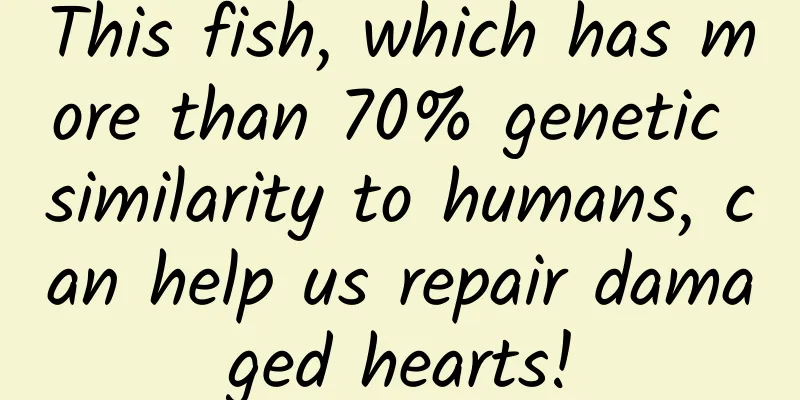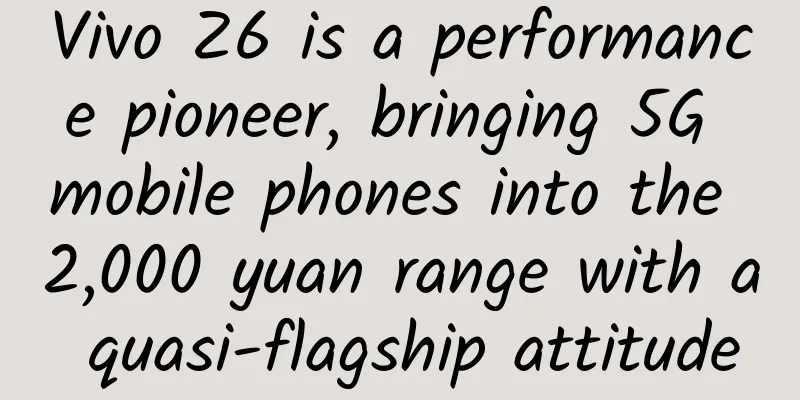This fish, which has more than 70% genetic similarity to humans, can help us repair damaged hearts!

|
The skin is constantly shed, the hair and nails grow so much that they need regular trimming; even the internal organs - the liver regenerates half of its cells within a few weeks. But you probably didn't know this: about 50% of the cardiomyocytes in our hearts survive from birth until death. The continuity and stability of the heart are amazing. However, this also means that if one of our myocardial cells is damaged, one is lost, and there is no way to replenish them in time. Globally, cardiovascular disease (including coronary heart disease, stroke and vascular dementia) accounts for 32% of all deaths. Among people over 75 years old, the incidence of cardiovascular disease is even higher than that of cancer. According to statistics, the mortality rate of acute myocardial infarction (AMI) in a specific population has increased by as much as 69.4%, and the patient population is becoming younger and younger. Myocardial infarction usually occurs when at least one of one or more coronary arteries becomes blocked, reducing the blood supply to the heart. Without oxygen, the heart muscle tissue downstream of the blocked area dies. Even if the patient survives, the dead heart muscle turns into scar tissue, which prevents the production of new heart muscle cells. What if doctors could replace dead or malfunctioning heart muscle tissue? This treatment would be revolutionary. About 1 million Americans are diagnosed with heart failure each year, and nearly 30% die within a year. Although humans can't do this (or, indeed, any mammal can't), there are some animals in nature that do have the ability to repair damaged hearts. Scientists have found the answer in the oldest vertebrates - fish, to be precise, a fish common in tropical freshwater waters: the zebrafish. Image source: pixabay In 2013, scientists finally got what they had been looking for for 10 years - the zebrafish genome sequence. They were surprised to find that the zebrafish and human genes were more than 70% similar, and more than 80% of the genes related to human diseases could be found in the zebrafish genome. People have discovered that although they only have one ventricle, their hearts can regenerate intact after cutting off part of this ventricle, and the proportion cut off can be as high as 20%! Image source: "Crazy Heart", CITIC Publishing·Nautilus, September 2022 edition When an area of their heart is damaged, the undamaged cardiomyocytes in that area re-enter the reproductive phase of their life cycle and begin making new, fully functional cardiomyocytes. Although zebrafish can regenerate after a large section of their heart is removed, scientists still need to show the same ability when faced with more common human heart diseases. To this end, researchers are trying to design experimental fish species with heart valve disease, congenital heart defects, and lipid metabolism diseases such as hypercholesterolemia. The road to exploration is long and tortuous, but scientists expect that one day in the future, using the new knowledge learned from the hearts of zebrafish and other non-mammalian animals, we will be able to use heart regeneration to create a new era of treating heart diseases. It's not just zebrafish that provide inspiration for our efforts to take care of heart health. In the book Crazy Heart by vertebrate zoologist Bill Shute, we found that scientists have learned the wisdom of repairing a heart from pythons; with the inspiration of spinach and 3D printing technology, we can even try to grow a heart from scratch in the laboratory! This is not a cold mechanical heart, but a highly bionic "real" heart. END Editor/Gulu |
<<: The national emblem of this country contains a drink that workers must have
Recommend
Teacher Xiaoyu's "Game Publisher's Practical Douyin Operation Course"
Teacher Xiaoyu's "Game Publisher's P...
SEM bidding search: What to do if there are too many accounts?
Too much clutter is a big problem that bothers ma...
Important reminder! Regarding travel during the National Day holiday!
The National Day holiday is approaching, and the ...
Guangzhou coffee shop mini program function, how much does it cost to develop a coffee shop WeChat mini program?
Coffee is a symbol of refined life. The developmen...
5000 words to analyze the philosophy of planting grass when browsing Taobao!
It’s Double Eleven again this year. At 0:00 on No...
Where can I get the Wenchang Pagoda? Where is Wenchang Tower effective?
Now, there are enough Feng Shui mascots on the ma...
The "involution" of the 618 content marketing war
This year's 618 is becoming more and more &qu...
Are green beans "not suitable" for the table? Doctors teach you the secret of "non-toxic dry rice"
Recently, Luzhou, Sichuan issued the "Luzhou...
National Mooncake Awards! Which of these 10 mooncakes do you like best?
Mid-Autumn Festival is a traditional festival in ...
4 tips to reduce the cost of information flow advertising!
Those who have been exposed to information flow k...
The eighth issue of the coquetry training camp teaches you the most practical coquetry techniques step by step
Why do you say that being coquettish is a man'...
"How to get more than 10,000 followers in 15 days" Short video account follower growth course
Course Contents: 1. How to create a profitable ac...
How to optimize iOS projects?
1. Structure and Architecture 1.1 Structure There...
WeChat Mini Programs, what kind of social ambitions does Zhang Xiaolong have?
A photo Zhang Xiaolong posted on his Moments yest...
Tik Tok operation is not difficult, you can understand it with a mind map!
With the gradual maturity of 5G technology, the s...









